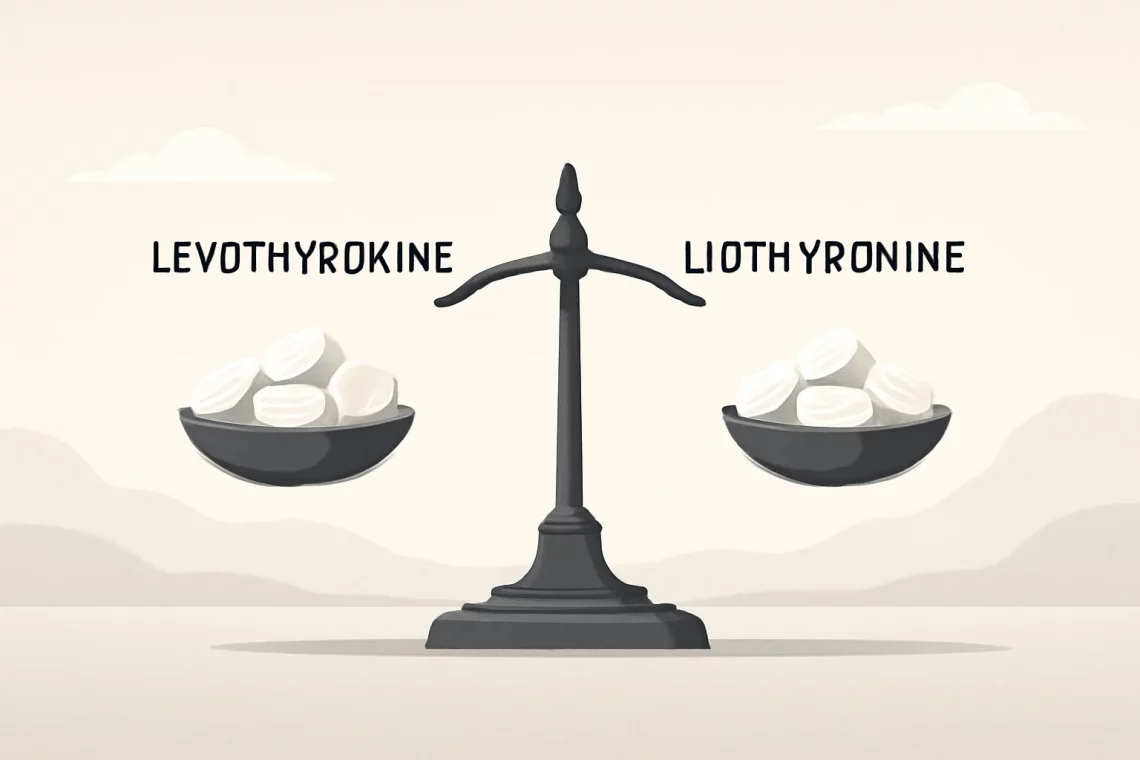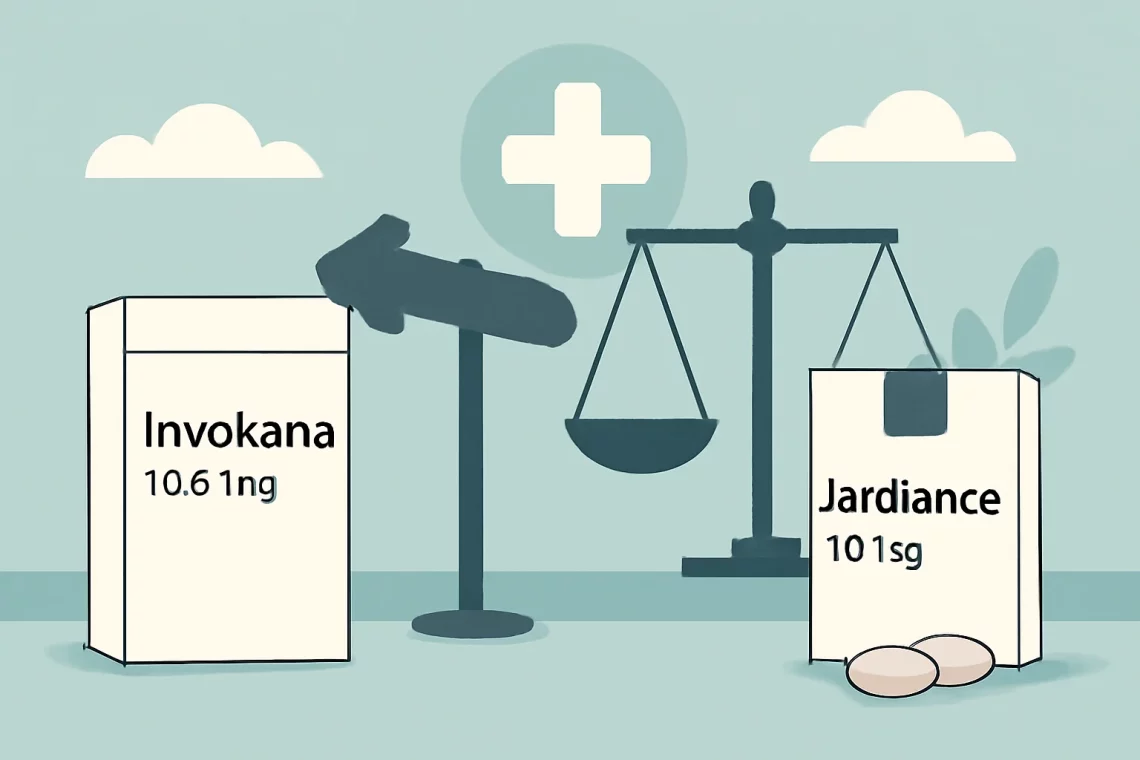-
Levothyroxine vs Liothyronine: Choosing the Right Thyroid Medication
Levothyroxine and liothyronine are two medications commonly prescribed to manage thyroid hormone levels in individuals with thyroid disorders. The thyroid gland, a small butterfly-shaped gland located in the neck, plays a critical role in regulating metabolism, energy production, and overall hormonal balance in the body. When the thyroid is underactive, or hypothyroid, it can lead to symptoms such as fatigue, weight gain, depression, and sensitivity to cold. Levothyroxine is a synthetic form of thyroxine (T4), a hormone that the thyroid naturally produces. This medication aims to restore normal hormone levels, alleviating the symptoms of hypothyroidism. On the other hand, liothyronine is a synthetic form of triiodothyronine (T3), which is a…
-
Ciprofloxacin vs Doxycycline: Which Antibiotic is Right for You?
Ciprofloxacin and doxycycline are two widely used antibiotics that belong to different classes of medications, each with its unique mechanisms of action and therapeutic applications. Understanding the distinctions between these two drugs can be crucial for both healthcare professionals and patients when deciding on the most appropriate treatment for bacterial infections. Ciprofloxacin is a fluoroquinolone antibiotic that works by inhibiting bacterial DNA gyrase and topoisomerase IV, enzymes essential for bacterial replication and survival. It is effective against a broad range of gram-negative and some gram-positive bacteria, making it a versatile choice for treating various infections, including urinary tract infections, respiratory infections, and certain gastrointestinal infections. On the other hand, doxycycline…
-
Amoxicillin vs Levaquin: Understanding Their Differences and Uses
Amoxicillin and Levaquin are two widely used antibiotics, each with distinct mechanisms of action and treatment applications. Understanding the differences between these medications is crucial for both healthcare providers and patients. Antibiotics play a vital role in combating bacterial infections, but their effectiveness can vary depending on the type of bacteria involved and the specific properties of the medication. Amoxicillin, a member of the penicillin class, is commonly prescribed for a variety of infections, including those affecting the respiratory tract and urinary system. It operates by inhibiting bacterial cell wall synthesis, leading to the death of susceptible bacteria. Levaquin, on the other hand, is a fluoroquinolone antibiotic that works by…
-
Cephalexin vs Amoxicillin: Key Differences and Uses Explained
The world of antibiotics is complex and diverse, offering a range of options to combat bacterial infections. Two commonly prescribed antibiotics are cephalexin and amoxicillin. Both belong to the penicillin class of drugs, yet they have distinct characteristics, uses, and mechanisms of action. Understanding these differences is essential for making informed decisions about treatment options. Cephalexin, a first-generation cephalosporin, has been a staple in treating various infections, including skin and respiratory tract infections. On the other hand, amoxicillin, a broad-spectrum penicillin, is widely used for its efficacy against a variety of bacterial infections, including ear infections and urinary tract infections. The choice between these two antibiotics often depends on the…
-
Invokana vs Jardiance: Choosing the Right Diabetes Medication for You
When it comes to managing type 2 diabetes, patients often find themselves navigating a myriad of medication options. Two of the most commonly prescribed medications are Invokana and Jardiance, both of which belong to a class of drugs known as SGLT2 inhibitors. These medications work by preventing the reabsorption of glucose in the kidneys, leading to increased glucose excretion through urine. As diabetes management becomes increasingly personalized, understanding the differences, benefits, and potential side effects of each medication can empower patients in their treatment decisions. With a focus on improving glycemic control and reducing cardiovascular risks, both Invokana and Jardiance have garnered significant attention in the medical community. However, the…
-
Clindamycin vs Augmentin: Which Antibiotic is Right for You?
Clindamycin and Augmentin are two commonly prescribed antibiotics that serve different purposes in the treatment of bacterial infections. Understanding the nuances between these two medications is essential for both healthcare professionals and patients. Antibiotics are critical in combating bacterial infections, and their appropriate use can significantly influence recovery outcomes. Clindamycin is often utilized in cases where penicillin allergies are present or when targeting specific types of bacteria, particularly anaerobic bacteria. On the other hand, Augmentin, a combination of amoxicillin and clavulanate potassium, is effective against a broader spectrum of bacteria due to its dual action. Both antibiotics have distinct pharmacological profiles, mechanisms of action, and side effects, making it crucial…
-
Ativan vs Xanax: Understanding the Differences and Uses
Ativan and Xanax are two commonly prescribed medications that belong to a class of drugs known as benzodiazepines. These medications are primarily used for the treatment of anxiety disorders, panic attacks, and other related conditions. While both Ativan and Xanax share similar therapeutic effects, there are notable differences between the two that can influence a healthcare provider’s choice in prescribing one over the other. Understanding these differences, including their pharmacological properties, potential side effects, and the contexts in which they are most effective, is crucial for patients seeking relief from anxiety and related symptoms. As anxiety disorders become increasingly prevalent, the conversations surrounding the use of such medications have garnered…
-
Naproxen vs Mobic: Which Pain Reliever is Right for You?
Naproxen and Mobic are two widely used nonsteroidal anti-inflammatory drugs (NSAIDs) that serve to alleviate pain and reduce inflammation. While both medications are effective in managing various forms of pain, such as arthritis, menstrual cramps, and muscle aches, they have distinct characteristics and mechanisms of action. Understanding these differences can help patients make informed decisions about their treatment options. The choice between Naproxen and Mobic may depend on several factors, including the specific condition being treated, the patient’s medical history, and the potential side effects associated with each medication. As with any medication, it is crucial to weigh the benefits against the risks and consider how each drug fits into…
-
Methotrexate vs Humira: Choosing the Right Treatment for Arthritis
Methotrexate and Humira are two widely recognized medications in the realm of autoimmune diseases and inflammatory conditions. As chronic illnesses afflict millions, the quest for effective treatment options has led to the discovery and development of various pharmaceuticals. Among these, Methotrexate and Humira have emerged as significant players in the management of diseases like rheumatoid arthritis, psoriasis, and Crohn’s disease. Methotrexate, initially developed as a chemotherapy agent, has gained popularity for its immunosuppressive properties, making it a cornerstone in treating several autoimmune disorders. On the other hand, Humira, a biologic drug that targets specific pathways in the immune system, represents a newer approach to managing inflammation and immune response. The…
-
Januvia vs Farxiga: A Comprehensive Comparison of Diabetes Medications
The prevalence of diabetes has become a pressing health concern globally, with millions of individuals affected by this chronic condition. As the medical community continues to seek effective treatments, numerous medications have emerged to help manage blood sugar levels and improve the overall quality of life for those living with diabetes. Among these medications, Januvia and Farxiga have gained significant attention for their unique properties and effectiveness in controlling diabetes. Understanding how these medications work, their benefits, and potential side effects can be crucial for patients and healthcare providers alike. Each medication operates through different mechanisms, targeting various aspects of diabetes management. As patients navigate their treatment options, it is…






































